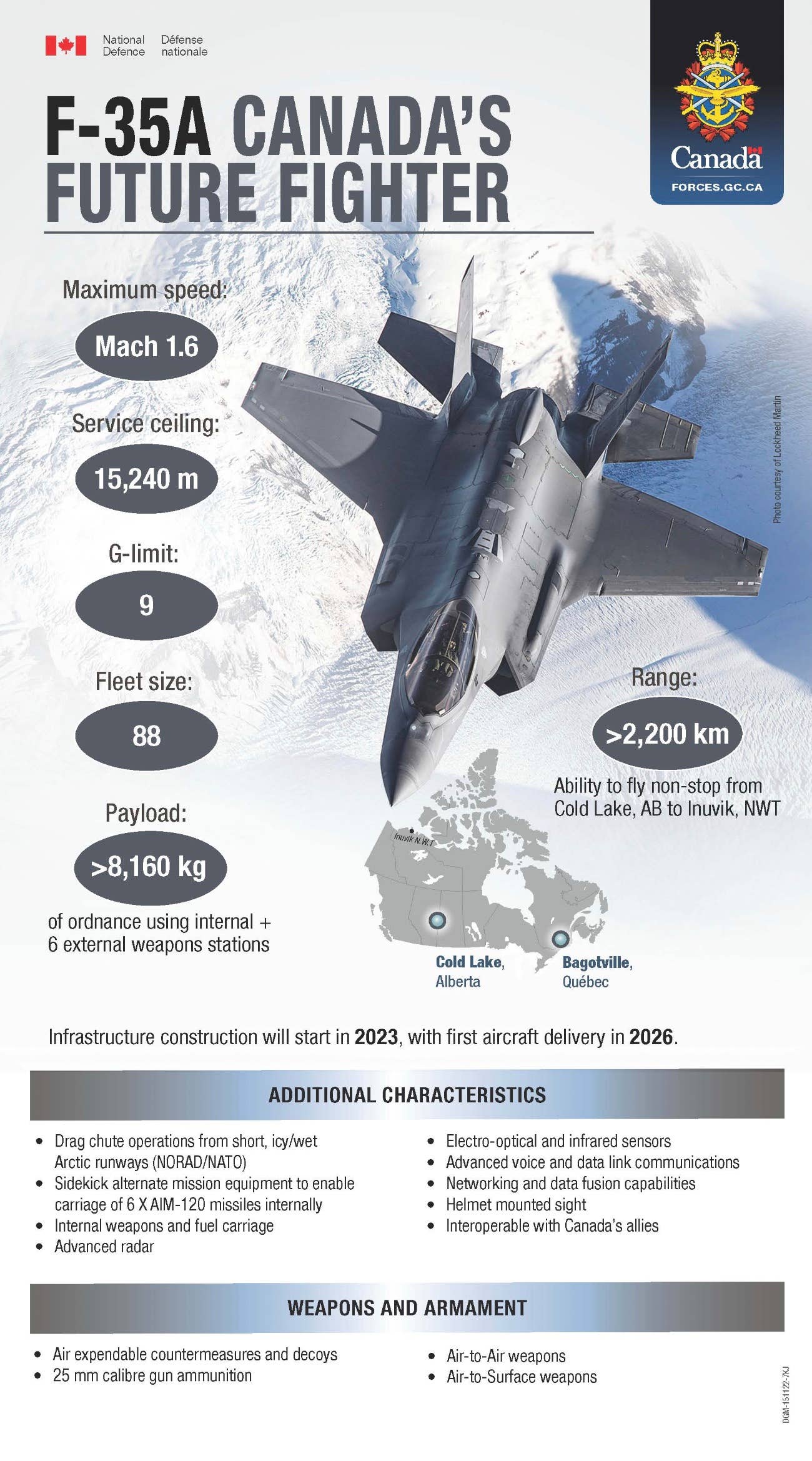 01-11-2023, 09:36 AM
01-11-2023, 09:36 AM
|
#506
|
|
A Fiddler Crab
Join Date: Jan 2007
Location: Chicago
|

The deal to purchase 88 F35’s has been finalized.
https://www.cbc.ca/news/politics/can...deal-1.6707769
Quote:
Canada has signed off on the final contract to buy F-35 jet fighters to replace the air force's aging CF-18s, Defence Minister Anita Anand said Monday.
The final agreement for 88 warplanes — involving the Canadian and U.S. governments and the jet's manufacturer — won't see its first delivery until 2026 and the first F-35 squadrons will not be operational until 2029, senior defence officials said during a technical briefing before the minister's announcement.
The project's budget of $19 billion remains the same as originally forecast by the Liberal government when it signalled the purchase last year. Anand and other government officials are sticking to that projection despite the likely effect of inflation — which has caused budgets for other major programs to rise dramatically.
|
Some details on the specifics that are known about the planes Canada is purchasing, and some still open questions:
https://www.thedrive.com/the-war-zon...s-aging-cf-18s
Quote:
Other key details have also emerged in the wake of the announcement. Canada’s CBC reports that a senior Canadian defense official confirmed on January 9 that Lockheed Martin’s latest Lot 18, Block 4 F-35As will be delivered as part of the package, which feature a wide-range of improved technologies and weaponry. An infographic Tweeted by the RCAF also noted the claimed advantages of Canada's future fighter. This includes:
- A flight range greater than approximately 1,367 miles (2,200 km), with the ability to fly non-stop between Cold Lake, Alberta to Inuvik, in Canada’s North Western Territories.
- A drag chute used to slow the aircraft down in icy conditions. These are currently only in use on Norweigan F-35s, and are a particular feature of aircraft used in arctic conditions.
- A 'sidekick' devise, allowing for 6 AIM-120 missiles to be carried internally instead of 4.
- A payload greater than 17,989.72 lbs. (8,160 kgs) of ordnance combining internal and external weapons stations
…
In official renderings of Canada's F-35 variant, we see a standard F-35A boom refueling receptacle on the jet. This could just be a mistake or it could indicate the jets will require a boom-equipped tanker. Currently only the F-35B and C have probes to make them compatible with hose-and-drogue tankers. There is also the possibility that Canada's F-35As could be the first of the conventional takeoff and landing (CTOL) A variant to receive refueling probes which, as we explained previously, would comprise a special configuration. This would allow the RCAF's fleet of F-35As to refuel from the service's future tanker selection, the Airbus A330-based Multi Role Tanker Transport, which is currently not disclosed as being configured with a boom. The current Polaris tankers and C-130s do not have booms either. Canada's CF-18 Hornets use the hose and drogue system. It's possible that Canada's future MRTTs will receive booms, which offer fuel flow and connecting advantages over the hose and drogue, as part of the F-35 selection, but at this stage, we simply do not know for sure if this will be the case. A boom equipped MRTT would also offer far better interoperability with U.S. and other NATO aircraft. Alternatively, the F-35s could be built with both a probe and a receptacle for fully flexible operations.
|

Ultimately, the Liberal government drags their feet and acquires more airframes of a significantly better plane (Block 4 vs Block 1 F35) at a better price.
|

|

|